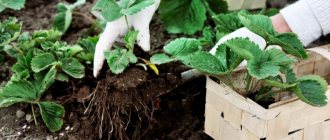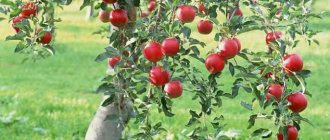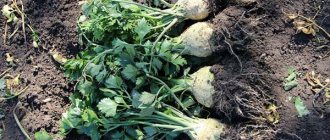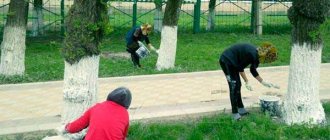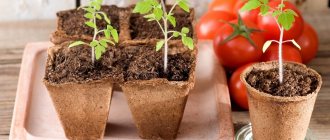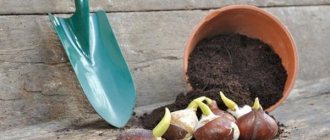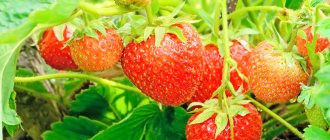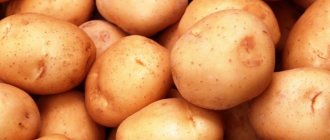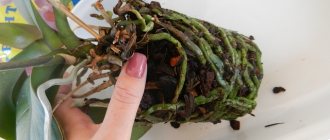How to sow a vegetable garden in the spring so that the earth can rest. Crops sown for recreational land
- Oats or rye - in the case of cereals, you can plant one half of the field one year, and the remaining half the next. Thus, the earth will rest and be nourished during this period. Some gardeners plant the area with cereals for the winter, and in the spring they dig it up and then begin planting cultivated plants.
- Legumes, for example, beans or peas, are notable for the fact that they enrich the soil while producing a harvest, and at the same time are simple and unpretentious to care for. The main thing to remember is that you need to dig up the soil while they are still green.
- Marigolds - some people plant them because they disinfect the soil, and besides, they delight the eye with their beauty.
- Calendula is one of the most popular medicinal herbs that are often sown to relax the ground. Calendula saturates the soil with beneficial properties, and in addition, like legumes, it can be used for practical purposes, using it as a component for natural home cosmetics, and also used for treatment.
- Mustard is ideal if you need help with a weed problem. However, it is worth digging up the plant after frost or before it wilts. This range of helpers against uninvited green guests also includes rapeseed, alfalfa, clover, sweet clover and vetch.
Soil fertilization options
However, not only plantings can enrich the soil. Here are some more ways:
- collecting tree leaves and weed stems, which can serve as an excellent fertilizer, turning into compost - the herbaceous mass is collected in the fall, watered with potassium permanganate, and left to rot in a specially equipped compost pit for the winter. The leaves are cleaned of fungal spores, after which the fertilizer is dug up and applied to the soil.
- Of course, no one canceled the old proven remedy - manure. The main thing is to use rotted manure, not fresh. Only horse and cow are suitable for such purposes.
- Another method that came to us “from time immemorial” is mixing the top layer of soil with ash.
- The newest, modern method is the colonization of Californian worms. Worms live in the soil, saturate it and loosen it, digging holes. But the main thing is not to forget to sow the soil so that it does not become empty, giving way to weeds.
Rest of the earth - when is it needed?
Tips on tillage and fertilizers
Each plant depletes the soil in its own amount of time, for example, a sunflower in three years, rapeseed in a year, and potatoes in five years! And in order not to reduce the amount of harvest, the land is allowed to rest for about two years! At this time, the soil is fertilized and left to grow over with grass!
I strive not for a million - but for a billion!
Kokojamba wrote: IntellektualNik, such a sequence does not always justify itself - many plants cannot take root in the place where another one grew last year. yu8l8ya, it’s not so much a character problem - it’s just that a dacha for me is a continuous rest and vacation in the summer, and I don’t want to lose it for a whole year.
But you can plant plants suitable for replacing the previous ones. You can plant an area under sederat: you will receive care and the benefits for the soil will be obvious. If you don’t want to sow the entire area for sederat, sow half and use the other half as usual.
Kokojamba wrote: I have already begun to become more interested in reading about the need for rest for the earth. For a simple dacha, it will be useful to skip 1 year, start black soil, fertilize and dig up. But, of course, I don’t want to erase an entire harvest year from my life. For now, the earth bears fruit, but “it’s not the same anymore.” Tell me, what is the best way to calculate the very moment when the earth needs rest?
The soil does not get tired; it, like a living organism, lives and develops constantly. Strong, healthy soil will grow your crops and produce excellent harvests. Why does the soil become weak? Because when we remove crops from the soil, we do not always add an adequate amount of nutrients back. Because in conditions of 6 acres it is difficult to carry out crop rotation. The result is a drop in yield. However, in order to maintain the soil in an active state, you need to take care of the annual application of humus, sow winter crops, preferably rye, followed by burying this green fertilizer. Rotted leaves, rotted grass, weeds, deoxidizers - everything goes into the soil. Mineral fertilizers and microelements should be used in accordance with the specified standards. All this will help the soil to rest over the winter and next summer will delight you with harvests of cultivated plants.
Benefits of green manure
Green manure is gradually becoming widespread among gardeners due to its availability and beneficial properties. Their advantages are obvious:
- they make it possible to almost completely eliminate the use of mineral fertilizers, as they enrich the soil with microelements;
- restore the soil after acidification with fertilizers;
- loosen, improving its structure;
- activate soil microflora;
- having a phytosanitary effect, they inhibit dangerous pathogens;
- suppress the growth of weeds.
How to let the soil rest after potatoes. What to plant after potatoes to give the earth a rest
It just so happened that the same beds are allocated for potatoes from year to year. And then the summer residents complain, they say, we look after them, spud them, change varieties, but there is no result. That’s right - the soil is “tired”, depleted, so you shouldn’t expect a good harvest. Let's figure out what to do to rest the soil.
Why does the earth get tired?
Each garden crop, when grown, “takes” the nutrients it needs from the soil. Potatoes actively “eat” nitrogen and potassium, so that after 1-2 years of planting, the amount of these substances in the soil is sharply reduced. The application of fertilizers makes it possible to partially restore soil fertility, but new plantings of “second bread” again deplete the soil.
There is only one way out - maintaining crop rotation in the garden, alternating crops. Just under no circumstances should you abandon the ridges, leaving them without planting. In the spring, weeds will emerge in such areas in an even formation and will also begin to consume useful resources from the soil. Instead of one problem, you get two - weeds and soil depletion. So, during the period of well-deserved “rest,” the land needs to be sown with the right crops that enrich the soil on the site.
Features of growing potatoes
The well-known potato belongs to the group of row crops that require large areas and special agricultural technology. Throughout the season, the plantings are cared for by:
· loosening;
· harrowing;
· irrigation;
· weeding;
· hilling.
The vegetable is characterized by a large removal of nutrients from the soil, so high doses of organic matter and mineral fertilizers are added to the plantings. Potatoes are a “strong” crop, and after it it is advisable to plant “weak” plants that consume fewer elements from the soil on the beds.
What to plant after potatoes?
The best option is to sow cereals on the beds after potatoes: barley, oats, rye or wheat. It is advisable to sow them before winter, since in this case a large amount of useful organic matter accumulates in the soil.
In addition to cereals, it is recommended to sow legumes, which improve the structure of the soil and saturate it with nitrogen. But, unlike cereals, legumes require more moisture, so in regions with possible droughts it is better to plant grain crops. Sowing in the fall, after digging up potatoes and green manure (mustard, rapeseed, phacelia, lupine), gives a good effect. In spring, plants are buried when digging into the soil.
On a note!
Due to the long-term decomposition of plant residues, the green mass of cereals and legumes is not incorporated into the soil. They are used as mulch or placed in compost pits.
Radishes, salads, spinach, and onions give a good harvest after potatoes.
What crops are not recommended to be planted after potatoes?
When planning planting, keep in mind that they do not plant after potatoes:
· Bell pepper;
· eggplants;
· tomatoes.
The reason is simple: these vegetables suffer from the same infections as potatoes, and it is hardly worth risking the future harvest. But horseradish, garlic or beans will be excellent neighbors for potatoes, so it is wise to sow these plants in nearby beds.
Your like and subscription to the channel will help you understand that the article was useful to you.
A little about these crops
As already mentioned, the fertility of the soil cover is something without which not a single vegetable garden can exist and function. The agricultural industry cannot do without humus, biogenic chemical elements, water-air regime, as well as the activity of soil microorganisms, which determine the fertility of the earth. Without these factors, the soil cannot “function” normally, namely, “allow” the cultivation of fruit and other crops. Each type of culture requires something different from the land.
Potatoes, sunflowers, corn, beets, etc. are row crops and require a high content of nutrients in the soil. This is because the high yields obtained from cultivating these plants require large amounts of energy and nutrients. Organic matter is consumed very quickly when growing these plants. That is why gardeners alternate crops according to the principle “strong” - “weak” - “strong”.
Grain crops such as wheat, rye, barley, and oats require lower amounts of nutrients than row crops. They are usually planted when the soil needs to rest, including after repeated sowing of potatoes. Winter grains leave especially a lot of organic matter. Their straw contains a lot of potassium, which returns to the soil with manure. Nitrogen is also replenished from organic matter.
Legumes are good nitrogen accumulators. In addition, they help fight weeds, and the soil beneath them better retains moisture in the upper layers. Perennial grasses leave behind the largest amount of organic matter that is deposited in the soil. Leguminous grasses are richer in protein than cereals, but are less resistant to trampling and are more demanding of soil moisture than cereals. Therefore, in dry areas, cereals replace them, having an advantage.
What to sow under fallows. “Land fallow” - what is it and how is it correct?
Fallow in agriculture is a plowed field left unsown for one summer. If the land remains in this state for more than one year, then it is already called a deposit. This is the basis for the two historical and still most widespread systems of field cultivation in Russia: fallow, or fallow, and fallow, or three-field. The main purpose of allowing fallow in fields is to be able to especially carefully develop the land for the next sowing. According to its original meaning, the concept of “fallow” included not only the rest of the land, but also the constant cultivation of the field during its fallowing. In other words, in ancient times, apparently, they knew mainly only black fallow, that is, the land was not allowed, due to frequently repeated cultivation, to be overgrown with herbs and was kept black. But then, little by little, changing economic conditions, and most importantly, constraints on the land, forced the farmer to use the fallow field in the form of pasture. Thus, green steam appeared, which, according to its common usage, is simply called steam in Russia. Very often, a fallow field is sown with some kind of annual plant, which can be harvested in the form of grass (vetch with oats, toritsa, etc.) or plowed into green fertilizer (buckwheat, white mustard, etc.). In this case, the steam is called occupied. In addition, there are a number of plants that are sown on a fallow field, and during the growth of which the ground is cultivated all summer, which replaces the action of steam. These are root crop plants, such as turnips, beets, etc., and tuber crops, such as potatoes, which is why root crops and tubers are called row crop plants, or fallow plants. By cultivating such plants, one of the main goals of steam is achieved - loosening the earth - sometimes even better than pure steam, but the cultivation of such plants on a fallow field is possible only where there is a long warm autumn, since the harvesting of root crops occurs at the end of August or beginning of September, when in Russia it is already too late to sow a winter plant, and meanwhile, steam cultivation of the land is intended almost exclusively for winter plants (wheat, rye, winter rape, etc.) There are three main types of fallow - pure, full and semi-fallow. Pure steam is divided into black, early and late (black and early can be coulisse). Fallow fallow can be continuous, row-crop and green manure. A busy fallow is a field that, during the fallow period, is sown with any crop with a short growing season - for example, vetch-oat or pea-oat mixture, sainfoin or green manure, plowing them in the budding phase - the beginning of flowering of the legume component. Busy couples use areas of sufficient moisture.
Weed Prevention
To avoid overgrowing an area with weeds, you need to:
- When preparing organic fertilizers, use only unripe herbs.
- Mow nearby areas: roadsides, vacant lots, areas along the fence.
- Do not allow weeds in the garden to produce seeds; remove them from the roots in a timely manner.
In the fight against wild plants, lawn grass, which destroys weeds, is best suited. This method requires minimal labor, and the plantings retain their qualities for a long time, adding picturesqueness to the summer cottage.
Cereals
You can qualitatively clear the soil of weeds and fertilize it with the help of cereals. They are excellent green manures.
Cereals include:
Rye is used as a winter crop (after all, it tolerates frost well). Therefore, it is sown at the end of summer, in September or later (it all depends on the climatic conditions of the area). It has a suppressive effect on weeds and pathogenic microflora. Rye crowds out everything, so you shouldn’t place garden plants near it.
Its green mass should be removed at the end of May, before planting vegetables. It is good to sow rye in wetlands so that it displaces water.
This green manure thrives on acidic soils, and its roots have a positive phytosanitary effect on root rot. The plot is planted with oats at the very beginning of spring (as soon as the frosts end). It is recommended to remove the green mass before flowering begins. Green oat sprouts have a beneficial effect on the human body. After oats, the soil is saturated with potassium, so tomatoes, eggplants, and peppers thrive in this area.
Buckwheat
Buckwheat has the same wonderful properties.
- It grows quickly, actively developing green mass and roots.
- After it, the soil is saturated with potassium and phosphorus.
- Buckwheat has a displacing effect against weeds, especially wheatgrass.
- It can be used as a winter crop. Often it is planted around the trees in the garden. It is sown in spring in warm soil. The green mass should be mowed before the plant enters the flowering phase.
- It is highly drought-resistant, but does not take away moisture from neighboring plants.
- Buckwheat adapts well to various soils.
Barley
In addition to all the beneficial properties inherent in green manure, barley stands out among them for its high drought resistance, thanks to which it is successfully used in arid regions. In addition, it is able to tolerate frosts - down to -5 degrees, quickly increasing its green mass. In view of this, the area is planted with barley in early spring, and after 40-50 days.
Where to plant
The area that is not intended for garden crops can be planted with Sudanese grass. Its strong roots and powerful stems suppress all growing weeds (perennials too). On those lands where it is planned to grow some agricultural crops, it is better to refuse Sudanese, since it is very difficult to eradicate it even with herbicides.
In mid-summer, some beds are already free of cultivated plants. They can be planted with rapeseed or white mustard. From mid-summer until frost, they will gain green mass and prevent weeds from germinating.
In late autumn, the area planted with green manure needs to be dug up or plowed (there is no need to remove the plants), and by spring you will have fertilizer saturated with nitrogen and other nutrients, no worse than compost.
In large areas where vegetables will not be grown in the coming years, we sow clover and alfalfa. Weeds will not grow next to them, the earth will rest and be saturated with useful substances. Cruciferous crops are a good option for summer cottages and garden plots.
Rapeseed and rapeseed can be sown between rows:
Green manure growing between the rows will crowd out weeds and saturate the soil with nitrogen, but will not interfere with the development of greenery.
Important! When using green manure, it is necessary to alternate plants (related ones cannot be sown). If a group of cruciferous crops was sown this year, then next year there is a reason to plant legumes or cereals.
Green manure is a successful analogue of chemicals, so summer residents turn to these wonderful plants much more often. If you have never sowed them, you can conduct an experiment on one bed and decide for yourself what is more convenient for you. Good luck to you!
Send to your social network so as not to lose:
Legumes
These green manures are the most common and undemanding plants. They come in different types. Russia is represented by beans:
- food;
- feed
Edible beans include:
They tolerate light frosts, and sprout already at +3 degrees C, so they can grow anywhere.
There are also a large number of broad beans:
Important! There is an opinion: sowing a plot of legume green manure three times and digging it up is the same as fertilizing it with manure.
Legumes are planted in early spring. Until frost they will produce green mass. After leguminous plants, the soil is saturated with nitrogen, since their root system contains special bacteria that produce nitrogen. Trees also benefit greatly from them (green manure also feeds them with nitrogen).
Benefits of broad beans
It is advisable to sow such plants on marshy and clayey soil. They are wonderful green manures, as they have a number of useful qualities.
- Plants have well-developed roots that drain and structure the soil to great depths.
- Thanks to them, the acidity of the soil decreases, which means the pH is normalized.
- With their help, phosphorus compounds gain easier access to plants.
- They tolerate cold and frost well - up to -8 degrees C.
- Contain a large amount of minerals.
Sweet clover
It is a powerful green manure plant with strong roots located at great depths. It is resistant to frost and drought, and improves the soil structure in salt marshes. Wireworms and some pests are afraid of it. It is planted at the end of summer, leaving it for the winter. By spring the green mass will grow. It is cut before flowering.
Sainfoin
It can be distinguished among green manures by its uniqueness. The plant is very unpretentious. Possessing a strong root that goes to great depths (about 10 meters), it is able to live in poor soils, thanks to which useful substances from the depths come to the surface. In addition, it drains the soil well and successfully tolerates extreme conditions. And he is also an excellent honey plant.
The green mass of this green manure grows in the second year, and for seven years it can serve as a source of green fertilizer. If sainfoin grows on the site, you won’t have to worry about what to sow the ground with for weeds for a long time .
Peas
This bean green manure helps fight weeds well, as it grows quickly, inhibiting their growth.
He likes to be located on neutral soil and loves moisture. Peas should be sown when summer is coming to an end, but nevertheless, before the onset of autumn, the necessary green mass is accumulated. With the onset of warm weather, it’s a good idea to sow tomato beds with vetch. This is an annual legume green manure. It quickly collects the necessary green mass and structures the soil. Cut 1.5-2 weeks before planting tomatoes.
Lupine
Abandoned areas are sown with lupine. This green manure takes root well on various lands, improving its quality. Lupine is deservedly considered an excellent predecessor of strawberries.
Alfalfa
A perennial green manure that has a great effect on soil fertility. Its greens are rich in various beneficial substances. The plant needs well-moistened (not to be confused with swampy) soils with a neutral pH. Alfalfa should be mowed when its buds form.
Seradella
In one season, green mass can grow twice. The plant loves moisture and, if there is enough of it, will grow on poor soil. Frost resistant.
Cruciferous
All representatives of this group are unpretentious and resilient. In addition, their secretions from the roots inhibit the action of late blight pathogens and pose a danger to many pests.
White mustard
This is an annual herbaceous plant that resists frost very well. In central Russia it can be sown in early spring.
Mustard has a number of green manure qualities.
- It suppresses the development of weeds and displaces them. This is especially effective for bindweed.
- It is an excellent preventative against late blight. Has a detrimental effect against slugs and pea moths.
- The green mass of white mustard produces excellent humus.
- Very long mustard roots (about 3 meters) loosen and drain the soil, retaining nitrogen in it.
- When the first snow falls, all parts of the mustard plant fall to the ground, creating a mulch layer that protects against frost.
- Mustard is a good predecessor for nightshades. Grapes and beans live comfortably near it.
- Mustard is an excellent honey plant, so thanks to it, there will always be bees in the garden.
Important! Mustard has the same pests as all cruciferous crops, so you should not plant related crops after it.
It is frost-resistant and rapidly gains green mass. Within a month, the stems grow up to 30 cm. Its roots extract sulfur and phosphorus compounds from the soil.
Oilseed radish
Of all the cruciferous plants, it is the most unpretentious plant, which is not afraid of either frost or drought. A powerful root system allows it to adapt to difficult living conditions. Inhibits the development of wheatgrass. It gains a large amount of green mass well, even despite late planting.
Surepka
An annual green manure, it loves moisture very much. Provided there is generous watering, rapeseed quickly gains green mass, even when planted in September.
